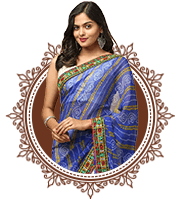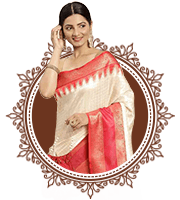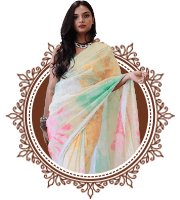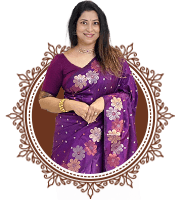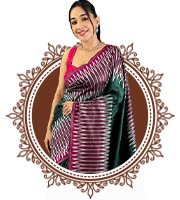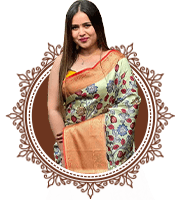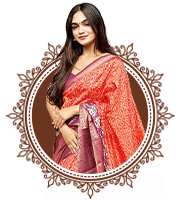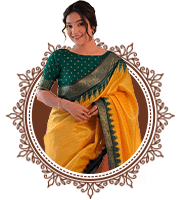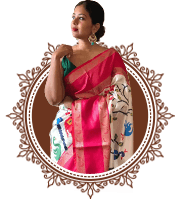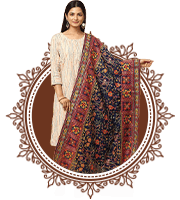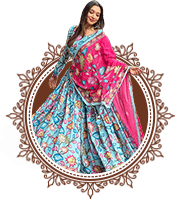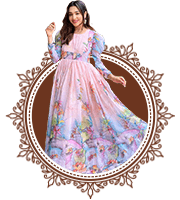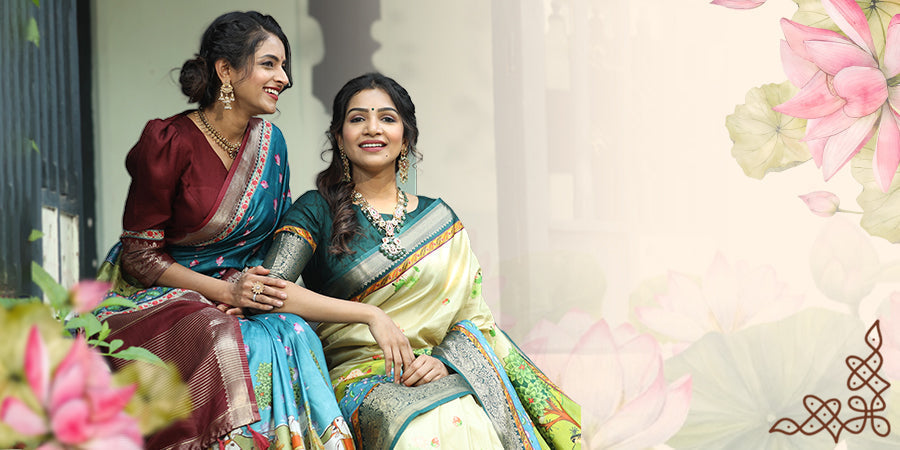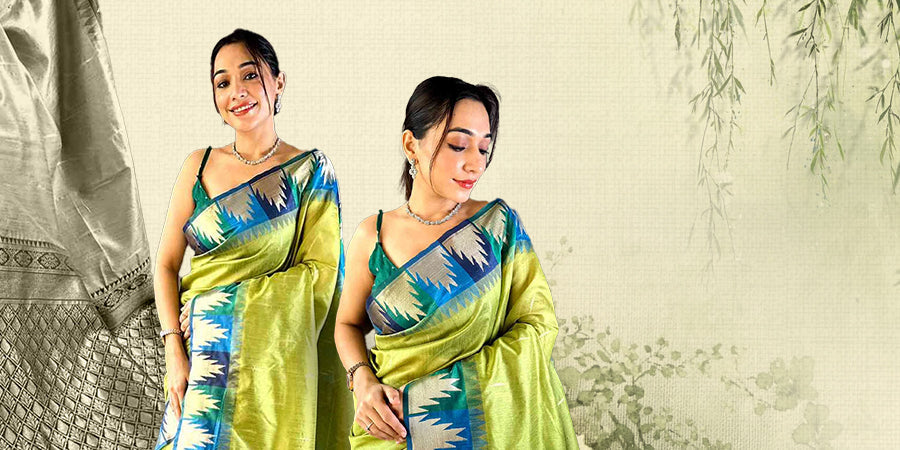
The Rich History of Kanjivaram Silk Sarees – Timeless Elegance from South India
The Kanjivaram silk sarees, also known as Kanchipuram sarees, are a legacy woven in threads of gold, silk, and heritage. These sarees are not just garments; they’re treasured heirlooms that represent South India’s rich textile tradition and cultural pride. Whether worn by brides on their big day or passed down across generations, Kanjivaram sarees carry stories of art, devotion, and timeless beauty.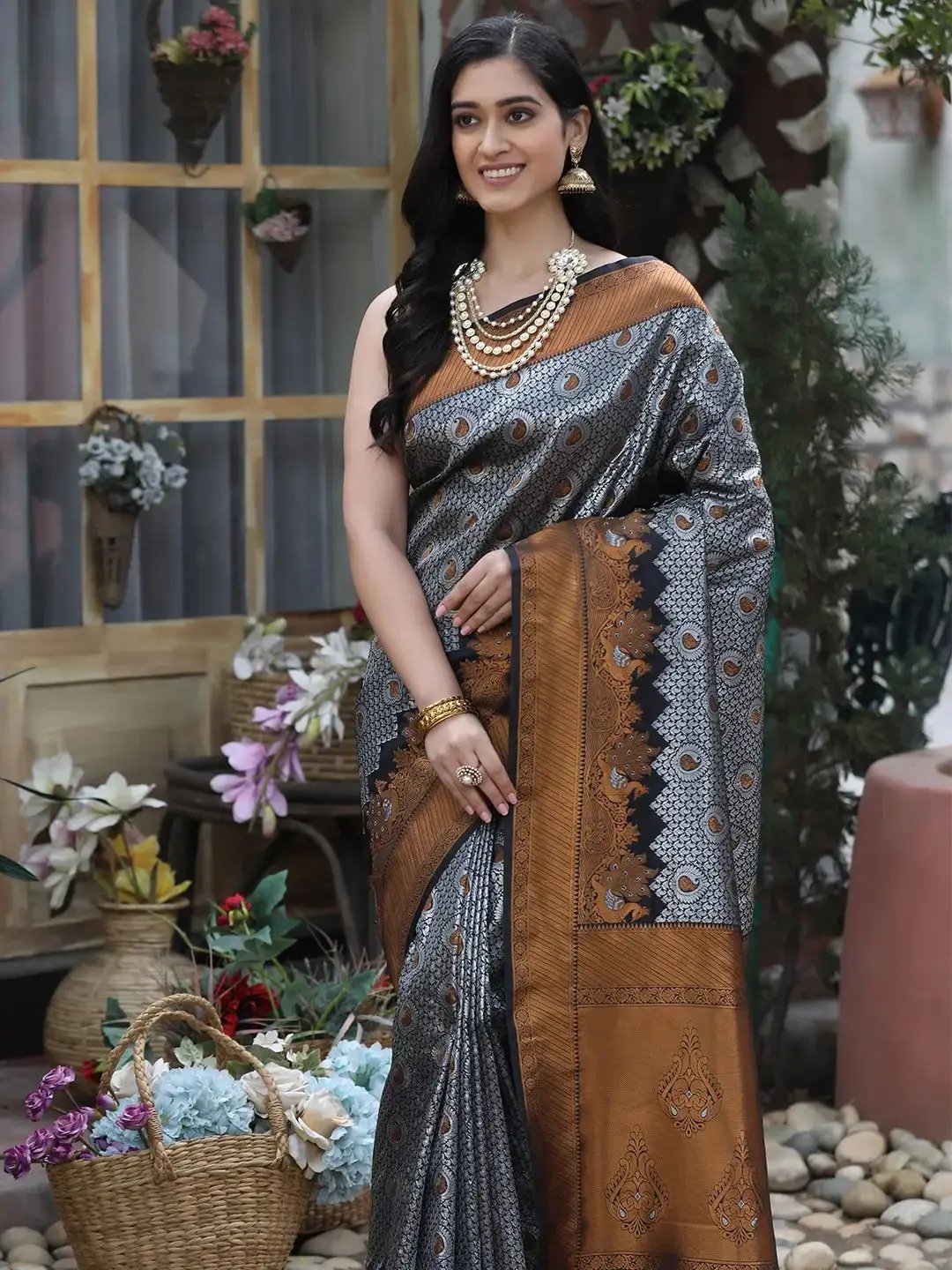
Origin of Kanjivaram Sarees – Where Tradition Begins
The origin of the Kanjivaram silk saree can be traced back to the small temple town of Kanchipuram in Tamil Nadu. Often referred to as the "Silk City of India," Kanchipuram has been a weaving hub for more than 400 years. The art is believed to have originated during the reign of the Pallava dynasty and flourished under the Cholas, and later, the Vijayanagar Empire.
Master weavers from Andhra Pradesh, belonging to the Devanga and Saligar communities, migrated to Kanchipuram and introduced intricate weaving techniques that gave rise to the iconic saree we know today.
What Makes Kanjivaram Sarees Unique?
- Silk Quality: Kanjivaram sarees are woven with pure mulberry silk threads, making them heavier, glossier, and more durable than other silk sarees.
- Zari Work: They are known for their rich gold zari borders and pallu (pallav), often made from real silver thread coated with gold.
- Contrast Borders: One of the signature elements is the vivid contrast between the body and border colours, seamlessly woven together using the korvai technique.
- Motifs and Patterns: Inspired by temples, peacocks, elephants, and mythological tales, the motifs on Kanjivaram sarees tell stories of India's spiritual and artistic roots.
Kanjivaram Sarees in Indian Culture
Kanjivaram sarees have been an integral part of South Indian weddings and festive celebrations for centuries. Brides often choose Kanjivaram as their wedding saree due to its auspicious nature, grandeur, and cultural significance. It symbolises wealth, tradition, and the blessings of elders.
Even Bollywood celebrities and global fashion icons have embraced the allure of Kanjivaram silk, making it a must-have in every Indian woman's wardrobe.
How Are Kanjivaram Sarees Made?
The process of weaving a Kanjivaram saree is labour-intensive and can take from 7 days to several weeks, depending on the intricacy of the design. Here's how it's made:
- Pure mulberry silk is sourced mostly from Tamil Nadu and Karnataka.
- The silk threads are dyed in vibrant colours using natural or chemical dyes.
- The zari (gold thread) is prepared by flattening silver thread and coating it with gold.
- Weavers use handlooms to create stunning designs, ensuring the body and border are interlocked strongly through the use of the korvai technique.
Each saree is a masterpiece — a blend of ancient knowledge, skilled hands, and cultural symbolism.
Preserving the Legacy
Today, while machine-made versions are available, authentic handwoven Kanjivaram sarees are still prized for their artistry. Many designers and cultural institutions are working hard to preserve this rich heritage and promote ethical handloom weaving practices.
Shop Kanjivaram Sarees at Vastranand
At Vastranand, we take pride in offering a curated collection of Kanjivaram silk sarees that celebrate this timeless tradition. Every piece is crafted with love, attention, and the spirit of cultural continuity.
Also explore:
Final Thoughts
Kanjivaram silk sarees are more than six yards of fabric — they are emotion, legacy, and luxury rolled into one. With each weave, we honour our heritage and pass it on to the next generation. Explore this magical weave and embrace the regal charm of Indian tradition with Vastranand.


